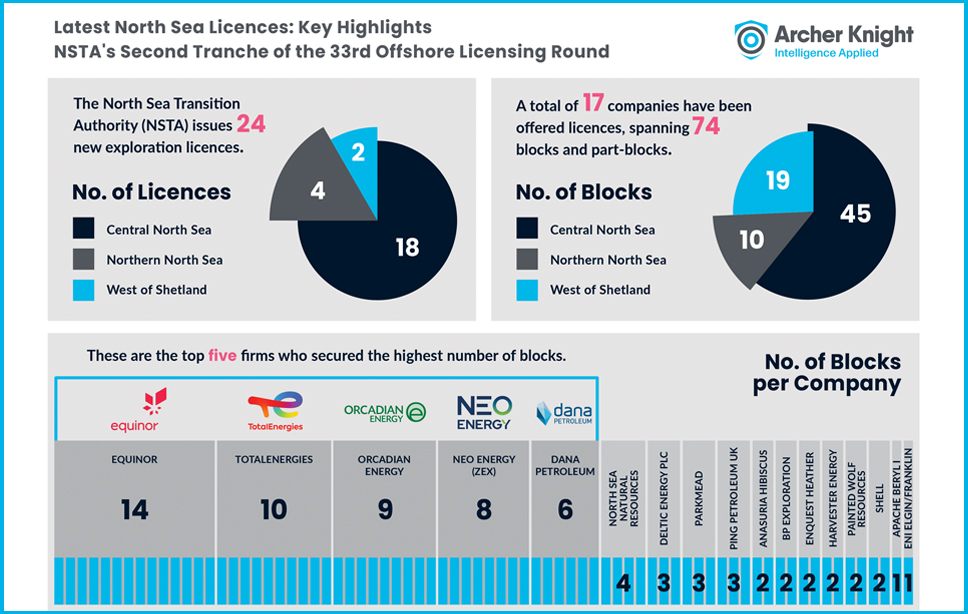
In this guest post, industry expert John Butler looks at the positive impacts ahead for oil and gas.
Energy transition is heralded as the great opportunity for the UKCS. What do we mean by energy transition and how can it positively affect businesses.
Understanding the drivers of energy transition
Upstream oil and gas faces an existential threat. It can no longer plough its own furrow by dominating the energy markets. Operators now must contend with investors demanding more transparency over the profits their businesses make.
These investors are increasingly applying non-financial factors as part of their analysis to identify material risks and growth opportunities – typified by environmental, social and governance (ESG) goals. As a result, operators now need to reinvent their business cases.
Offshore energy is no longer the sole playground for oil and gas, it is now shared with renewable energy. Notably, offshore renewable energy is now on a deflationary cost curve, achieved through a combination of economies of scale and standardisation of design and installation. By contrast, offshore oil and gas is on an inflationary cost curve, as hydrocarbons become harder (and therefore more expensive) to find.
“Isolation gives time but not immunity.” - Lamine Pearlheart
Oil and gas at the crossroads
A data-driven, digitally enabled society has created a hyper-turbulent world. The rules of the game have changed and continue to do so at a rapid pace.
Oil and gas now must adapt to the new reality. It is one part of an energy industry where decarbonisation a requirement not just an expectation. Remaining isolated by being faithful to hydrocarbons alone, is no longer an option. The industry has to diversify into alternative energy, just to remain relevant.
Oil and gas will be around for decades to come, so the energy transition is as much about ensuring there are sustainable sources of power as it is reducing greenhouse gas emissions.
This is where oil and gas companies play a vital role. For decades, they have challenged conventions. Now, the technologies and techniques developed to meet global hydrocarbons demand can be repurposed in pursuit of the ever-increasing need for sustainable alternative energy.
The energy transition ecosystem needs to be an interconnected structure, where oil and gas operators work with renewable energy developers. More importantly, businesses need to stop seeing themselves under the labels of one or the other and rebrand themselves as energy companies.
This trend has already started. BP spent the majority of 2020 laying out its energy transition strategy with the ‘reimagine’ tagline. Meanwhile, the Oil and Gas Technology Centre will now go by the title OGTC as it puts more focus on its net-zero emission ambitions.
Want advice on how to approach energy transition? Get in touch with us today. Visit the consultancy page for more information.
So what do companies do in an Energy Transition Ecosystem?
Here is what energy transition could look like for two types of business. Both have technical skillsets developed over decades, creating wealth, and driving innovations:
Drilling contractors
The future of sustainable energy could become inextricability linked to Carbon Capture and Underground Storage, (CCUS).
It’s impossible to simply ‘turn off the taps’ of oil and gas, we have to find a way to minimise emissions caused by hydrocarbons instead. CCUS provides this opportunity. The Acorn project in the North Sea is a prime example which will see emissions from the St Fergus refinery captured and sequestrated offshore.
CCUS is also vital for blue hydrogen production. This process sees methane reformed into hydrogen and the associated emissions removed via CCUS. Scaling up CCUS would mean a requirement to drill additional wells for CO2 storage.
There is now also increased focus on using geothermal energy to decarbonise oil and gas production. Instead of drilling for hydrocarbons, the drill rigs could go in search of geo-thermal springs. In other instances, power plant installed on a jack-up platform, equipped with steam turbines could generate large volumes of electricity from scorching geothermal steam. Renewable and CO2-free electricity is then transferred via subsea cables to customers. Companies are already exploring the potential of geothermal energy offshore. With the support and expertise of drilling contractors this form of alternative energy could become a reality.
Find out more about our drilling contractors market intelligence coverage here.
Engineering Design Houses
Oil and gas will remain a part of the energy mix. But we now know that technology already exists to make facilities of the future ‘zero emission’. Design houses can create these facilities and associated subsea infrastructure to meet these zero-emission targets.
Imagine a facility that is 100% emission free, a combination of electrification from fixed or floating wind, Tesla battery packs and hydrogen fuel cells providing power to a fully operational platform. A facility designed with the future in mind, to be repurposed for future energy needs, when the reservoirs have depleted.
Engineers could design platforms to be reused, perhaps as a substation for offshore wind or as an offshore electrolysis plant for the production of green hydrogen (produced from renewable electricity via an electrolytic process). This will extend the life of the facility, help spread the capital cost of installation over a longer period and ensure that sustainable energy can still be generated, even after the oil and gas has been exhausted.
“The gulf between today’s carbon prices and the actual cost of emissions to our planet is unacceptable.” – Angel Gurría, OECD Secretary-General, September 2018
The world is watching
We are now on the road to COP26 and the world is closely watching the oil and gas industry. Without a doubt, there is scepticism about the intentions of operators to drive energy transition. However, governments, international agencies, investors, and society in general are demanding more. This, coupled with the potential rise in the cost of carbon, will ensure that sustainable energy is not just a social or scientific choice, but an economically driven decision.
The energy transition ecosystem has the potential to meet our energy demands, provide a sustainable source of energy and secure skilled jobs. In a mature basin like the UKCS this is not a choice, but an imperative.
John Butler has more than 20 years’ experience in maritime, oil & gas and energy transition industries and is Director of Energy Transition and Sustainability at Transition Ignition Ltd.
Need help with your energy transition needs? Archer Knight can provide support and business development advice. Visit our consultancy page for more information or get in touch by email.

9 min read
How to manage energy transition in oil & gas
Done right, the move towards carbon neutral offers companies new and exciting opportunities. The industry is embracing the energy transition...

3 min read
The Role of Oil and Gas in the Energy Transition
Christopher Bird on the old guard and next generation Net Zero are the two words on everyone’s lips at the moment. The International Energy...

4 min read
Experts give their views on future of floating energy
Inaugural event helps industry leaders understand the challenges ahead Technological innovation. Learning from experience. Collaboration....


